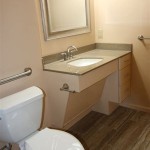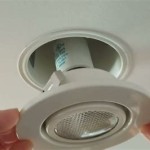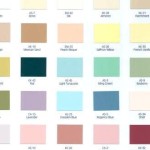Narrow Depth Bathroom Vanity: The Sleek Solution in Black
The bathroom, often one of the smallest rooms in a home, presents unique design challenges. Maximizing space while maintaining functionality and aesthetic appeal is a common concern for homeowners and designers alike. In compact bathrooms, the vanity, a necessary fixture for hygiene and storage, can easily overwhelm the available area. Narrow depth bathroom vanities offer a practical solution, allowing for essential storage and counter space without sacrificing precious square footage. When finished in black, these vanities provide a sophisticated, contemporary touch that complements a wide range of bathroom styles.
This article will explore the benefits of narrow depth bathroom vanities, focusing specifically on black finishes and their design implications. It will delve into considerations for choosing the right size and style, materials and construction, and the overall impact a black narrow depth vanity can have on the bathroom's aesthetic.
Space Optimization and Functionality
The primary advantage of a narrow depth bathroom vanity is its ability to optimize space in smaller bathrooms or powder rooms. Standard vanity depths often range from 20 to 24 inches. Narrow depth vanities, typically measuring between 14 and 18 inches, can create valuable breathing room without significantly compromising functionality. This extra space allows for easier movement within the bathroom, preventing a cramped and claustrophobic feeling, especially in smaller rooms.
Despite their reduced depth, narrow vanities can still offer ample storage. Many models feature clever design elements to maximize internal space. Drawers with multiple compartments, open shelving, and integrated storage solutions are commonly found in narrow depth vanities. These features allow for organized storage of toiletries, cleaning supplies, and other bathroom essentials, contributing to a cleaner, more organized bathroom environment. The reduced depth also encourages more mindful consumption of products, as limited space necessitates prioritizing essential items and discarding unnecessary clutter.
Furthermore, the reduced footprint of a narrow vanity can be particularly beneficial in bathrooms with awkward layouts or architectural constraints. In these spaces, a standard-sized vanity may not fit properly, leading to design compromises and wasted space. A narrow depth vanity can be strategically placed to overcome these challenges, providing a functional and aesthetically pleasing solution without disrupting the flow of the room.
The Impact of a Black Finish
The choice of color for a bathroom vanity plays a significant role in the overall aesthetic of the space. Black, in particular, offers a sophisticated and versatile option that can complement a wide range of design styles. A black narrow depth bathroom vanity adds a touch of elegance and modernity, creating a focal point that draws the eye and elevates the room's overall appearance.
Black vanities are incredibly versatile and can be incorporated into various bathroom designs. In contemporary bathrooms, a sleek black vanity with minimalist hardware can create a striking contrast against light-colored walls and fixtures. In more traditional bathrooms, a black vanity with ornate detailing can add a touch of drama and sophistication. Black also pairs well with a variety of materials, including marble, granite, wood, and metal, allowing for endless design possibilities.
The dark hue of a black vanity helps to conceal dirt and grime, making it a practical choice for busy bathrooms. Minor spills and splashes are less likely to be noticeable on a black surface, reducing the need for frequent cleaning. This can be a significant advantage for homeowners who value a clean and tidy bathroom but have limited time for upkeep.
Black can also be used to create visual interest and depth in a bathroom. By strategically incorporating black elements, such as the vanity, in a predominantly light-colored space, one can create a sense of contrast and visual intrigue. This technique can be particularly effective in small bathrooms, where it can help to break up the monotony and make the space feel larger and more dynamic.
Material and Construction Considerations
The durability and longevity of a bathroom vanity depend heavily on the materials used in its construction. Considering the humid environment of a bathroom, moisture resistance is a critical factor to consider when selecting a vanity material. Solid wood, engineered wood, and certain types of metal are commonly used in the construction of bathroom vanities, each with its own advantages and disadvantages.
Solid wood vanities offer a classic and luxurious option, providing a natural warmth and beauty that is difficult to replicate with other materials. However, solid wood is susceptible to moisture damage and can warp or crack if not properly sealed and maintained. For bathrooms with high humidity levels, it is crucial to choose a wood species that is naturally resistant to moisture, such as cedar or teak, and to ensure that the vanity is properly sealed with a waterproof coating.
Engineered wood, such as plywood or MDF (medium-density fiberboard), offers a more affordable and moisture-resistant alternative to solid wood. Engineered wood is less likely to warp or crack in humid environments, making it a practical choice for bathroom vanities. Look for engineered wood vanities that are finished with a durable coating, such as melamine or laminate, to further enhance their moisture resistance and longevity. The cost of engineered wood is less than natural wood, making it a very popular choice for furniture.
Metal vanities, typically made of stainless steel or powder-coated steel, offer a sleek and modern look. Metal is highly resistant to moisture and is easy to clean, making it a durable and low-maintenance option for bathrooms. However, metal vanities can be more expensive than wood or engineered wood vanities, and they may not be suitable for all design styles. Many may find the cold nature of metal to be too sterile and unappealing. Consider balancing the look with warmer materials such as wood countertops.
The construction and hardware of a vanity are equally important to consider. Look for vanities with solid construction, sturdy drawers, and durable hardware. Soft-close hinges and drawer slides can prevent slamming and extend the lifespan of the vanity. Examine the joints and seams to ensure that they are tightly sealed and well-constructed. A well-built vanity will withstand daily use and provide reliable storage for years to come.
Choosing the Right Size and Style
Selecting the appropriate size and style of a narrow depth bathroom vanity requires careful consideration of the bathroom's dimensions, layout, and overall design aesthetic. The vanity should be proportional to the size of the bathroom, allowing for comfortable movement and adequate space for other fixtures and fittings.
Before purchasing a vanity, measure the available space carefully, taking into account any obstructions, such as pipes, electrical outlets, or door swings. Ensure that there is sufficient clearance around the vanity for comfortable use of the sink and storage compartments. Consider the height of the vanity, ensuring that it is comfortable for all users. Standard vanity heights range from 30 to 36 inches, but taller or shorter vanities may be necessary to accommodate individual needs.
The style of the vanity should complement the overall design aesthetic of the bathroom. Consider the existing fixtures, lighting, and décor when selecting a vanity style. A modern bathroom may benefit from a sleek, minimalist vanity with clean lines and minimalist hardware. A traditional bathroom may benefit from a vanity with ornate detailing and classic finishes. A black vanity can be adapted to various styles, as discussed previously, so that choice will further need to be narrowed down depending on the other pieces in the bathroom.
Consider the type of sink that will be used with the vanity. Undermount sinks create a seamless look and are easy to clean, while vessel sinks add a touch of drama and visual interest. Integrated sinks, where the sink and countertop are molded together, offer a clean and modern aesthetic. The choice of sink will influence the overall style and functionality of the vanity.
Finally, consider the storage needs of the bathroom. Determine the types of items that will be stored in the vanity and select a model with appropriate storage compartments. Drawers are ideal for storing small items, such as toiletries and makeup, while cabinets are better suited for storing larger items, such as cleaning supplies and towels. Open shelving can be used to display decorative items or store frequently used items. Balance form and function to choose the right vanity.
In summary, a black narrow depth bathroom vanity combines space-saving functionality with a sophisticated aesthetic, making it an excellent choice for small bathrooms or powder rooms. By carefully considering the size, style, materials, and construction of the vanity, homeowners can create a functional and stylish bathroom that meets their needs and reflects their personal taste.

Narrow Depth Bathroom Vanities Signature Hardware
Bathroom Vanity Guide Signature Hardware

Pin By Rosa Maria Alfonso Espitia On Moldes Para Baño Modern Bathroom Vanity Narrow Vanities Design

Narrow Depth Vanity 15 To 20 In Dept Space Saving

30 Inch Narrow Depth Console Bath Vanity Custom Options Small Bathroom Vanities Sinks

Narrow Depth Bathroom Vanities Signature Hardware

Narrow Depth Vanity 15 To 20 In Dept Space Saving

Narrow Bathroom Vanities A Simple Solution For Small

30 Inch Narrow Depth Console Bath Vanity Custom Options

Narrow Depth Bathroom Vanities Signature Hardware
Related Posts







